Anger Iceberg for Kids: In this post, we will discuss how we can use the powerful anger iceberg metaphor to help kids, parents and educators explore the hidden layers of feelings camouflaged under the more explicit anger emotion. You will also be able to download a fun anger iceberg printable for kids.
“That’s the tip of the iceberg ” is a well-known expression that suggests that what you see or know about a topic is just a small part of a much larger and unknown reality.
In psychology, the iceberg metaphor was first used to represent the notion that conscious events represent only a small and accessible aspect of a larger domain of unconscious psychological functioning.
But the iceberg metaphor is such a great way to visualize how much more is hidden in complex problems that it has rendered many more iceberg-inspired metaphors like:
- Cultural Iceberg (hidden subjective, unconscious knowledge that is difficult to change)
- Success Iceberg (you can see the final outcome but may not be aware of all the hard work and previous shortcomings that led there)
- Iceberg of Domestic Violence (often hidden and not visible)
- Anxiety Iceberg (there are many not-obvious signs of anxiety)
- ADHD Iceberg (using the analogy to draw attention to the many invisible symptoms)
The Anger Iceberg that we will explore in this article is another well-known iceberg metaphor.
I wanted to explore the anger iceberg from a double perspective:
- An anger iceberg for kids, as an activity to help them explore triggers and underlying feelings that they may be experiencing when they feel angry.
- An anger iceberg for parents and educators, as a tool to help us reflect on the fact that those anger outbursts that sometimes puzzle us may be linked to other emotions that are playing beneath the surface.
What is Anger?
Anger is an intense emotion triggered by a perceived threat, provocation, injustice, or wrong-doing. It is often classified as a basic or primary emotion, but there are many secondary emotions that relate to anger.
What is the Anger Iceberg?
The anger iceberg is a metaphor that highlights that the expressions of anger that are so easy to notice may be hiding other complex emotions.
On the tip of the anger iceberg, we represent what we can see:
- Anger signs: yelling, shouting, stomping, destroying things, crying
Beneath the surface, we explore underlying feelings and emotions:
- Emotions that make us feel vulnerable and that we disguise as anger
- Anger as a secondary emotion, fueled by a different emotion.
- Examples of those emotions may be frustration, shame, hurt, embarrassment, jealousy, or guilt.
The Anger Iceberg metaphor is often attributed to John Gottman (Gottman Institute). Gottman, known for his work on marital stability and relationships, compares anger with an iceberg where the raw feelings cannot be seen.
Anger Iceberg for Kids
So, how can we use the anger iceberg to help our kids?
There are a few ways we can approach this anger management activity.
I’ve included a few scripts of what you may wish to say to your child or student (cursive text highlighted in blue)
At the end of the post, you will be able to download a cute anger iceberg PDF that narrates some of the scripts suggested below.
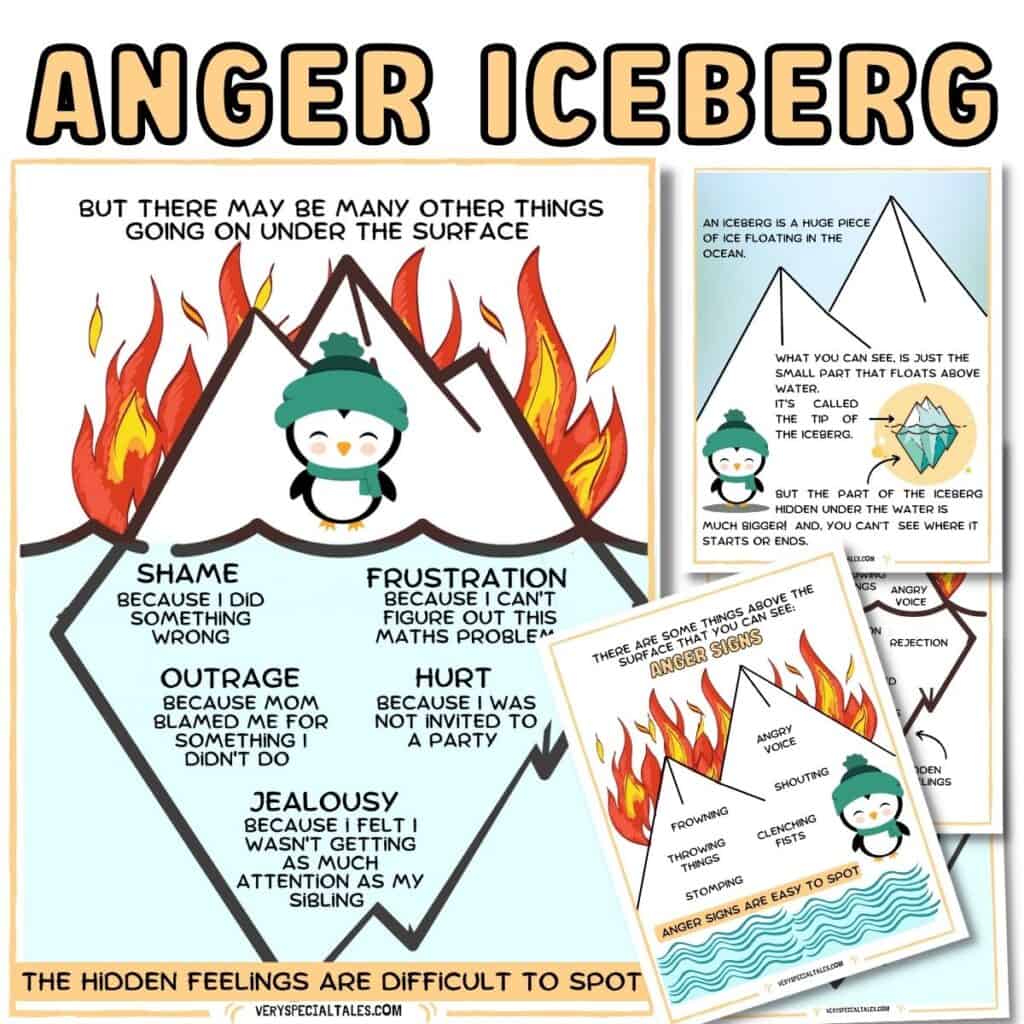
1. First, Calm Down
Trying to explore our feelings when we are overwhelmed just doesn’t work. Our thinking brain is in full anger mode, so there is very little room for reflection.
If your child is feeling angry or frustrated, the first step will be to help them calm down.
Effective calm down strategies may include deep breathing exercises, tensing and relaxing muscles, or taking a break with a fun activity (listening to a song, watching a video).
2. Talk About Icebergs
This is a good conversation starter because we are going nowhere around difficult feelings at this stage.
3. Anger Iceberg Metaphor: Connect the Iceberg Image to Anger
Now, use this great tool to draw parallels between the iceberg and anger.
If you see your sibling (friend) acting like that, what is really happening? Let’s look at all the things that may be happening (look at the iceberg drawing):
- Are they feeling frustrated because they can’t understand this maths problem?
- Are they ashamed about something they did?
- Are they hurt because they feel left out?
- Are they just scared about something?
- Do they feel they’ve been wronged?
4. Use the Anger Iceberg to Explore Anger Feelings
Explore your child’s anger.
Do you think we could use the anger iceberg to understand your own anger? It may help you next time you feel that big emotion.
- Anger triggers for kids.
Think about some times when you felt angry. What made you feel that way? (Write down in your Anger Iceberg PDF as many as your child can think of) - Do you think you had other feelings apart from anger?
We can explore some feelings and you can tell me if they sometimes look like anger (I use emotions flashcards to explore some other feelings)
5. Healthy Ways to Express Anger
I wouldn’t want to finish any anger activity without working on emotional regulation and appropriate ways to express anger.
Once we have explored the anger iceberg, we can discuss safe ways that could help us cope with an anger problem next time we see ourselves in that situation (deep breaths, problem-solving, talking to somebody we trust)
Recommended resource: A Cool Kid Journal (Activities to help deal with anger in safe ways)
Anger Iceberg for Parents and Educators
Sometimes, we may forget when we look at an angry child that the big emotions we see are just the surface of the iceberg.
There may be unexpressed emotions, underlying issues, and vulnerable feelings.
It is important to teach kids to express anger in a healthy manner. But it is also important to dig deeper to understand their true emotions.
Last, but not least, remember that if you have concerns over your child’s anger issues or mental health you should seek qualified professional advice.
Other Anger Management & Emotions Activities for Kids
These posts and resources share can help your young people and children explore their emotions:
- Anger Journal
- Feelings & Emotions Mega Bundle
- Emotions Flashcards
- Anger Lapbook for Kids
- Anger Thermometers
- Mood Charts for Kids (Trackers)
- Anger Volcano Worksheet and Activity
- 50 Feelings Activities for Kids
- Wheels of Emotions
- Anger Management Activities for Kids
- Anger Management Games
Anger Management Activities for Teens
- Anger Management Toolkit for Teens (product)
- Anger Management Activities for Teens (article)
Anger Iceberg Worksheet (PDF Download)
Your digital download includes the following resources:
- Anger Iceberg Story (A cute penguin explains the metaphor to kids)
- Blank Anger Iceberg printable
- Emotions checklist for inspiration or prompts when filling in the iceberg.
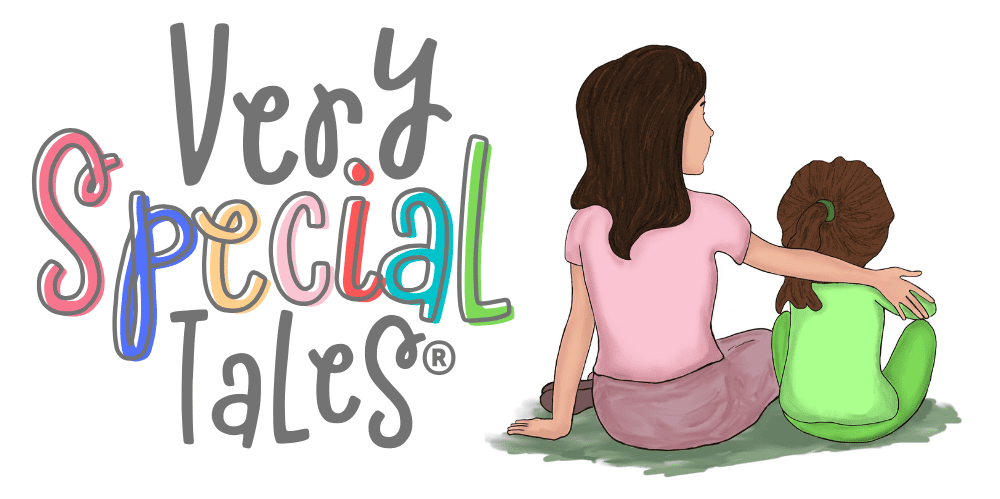
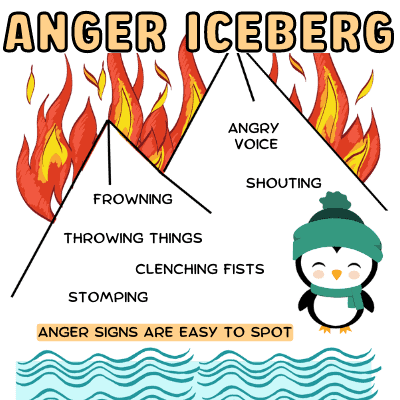
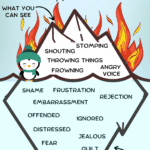

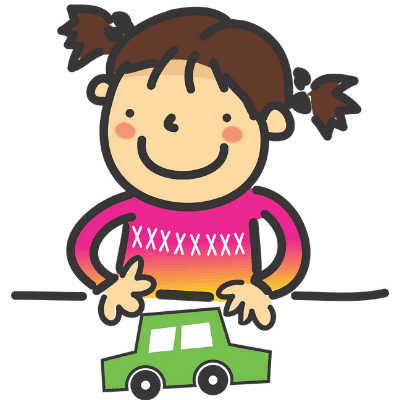
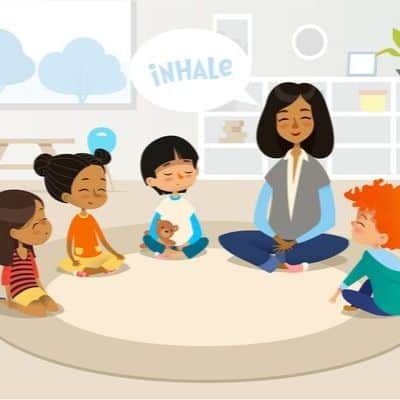

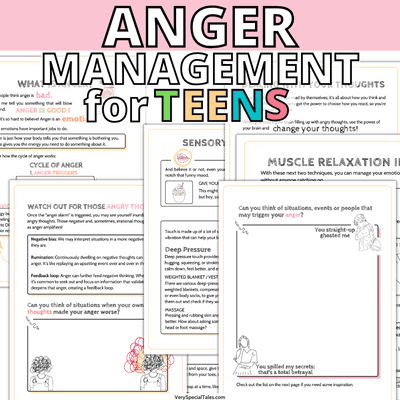
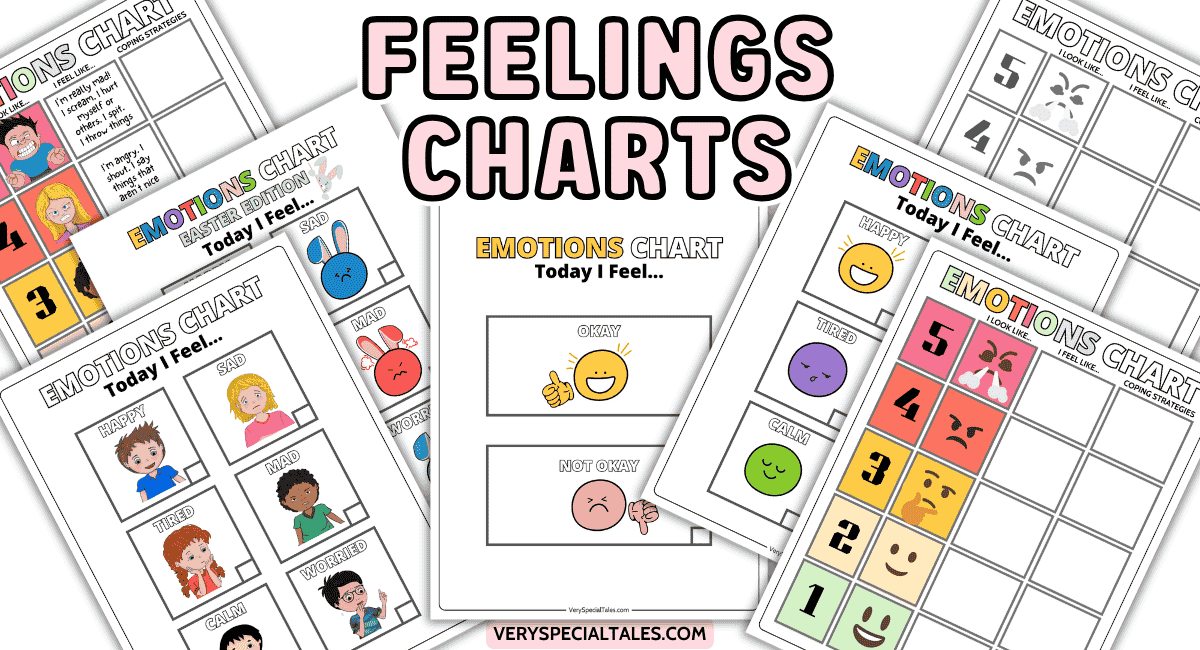
Please can you send me the Anger Iceberg info.
Many thanks.
Great reading
I look forward to using these materials with the young kiddos and their families that I work with.
I feel very fortunate finding you!!! I teach all things SEL to K-2 students. Your knowledge, suggested activities are top notch. Your resources have been incredibly valuable to me!
Thank you!!!!
Deedra Hasegawa
so happy i’ve found this!
This resource is so valuable, thank you!